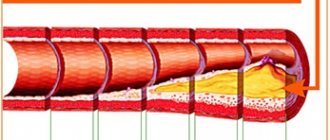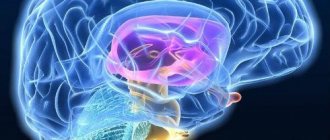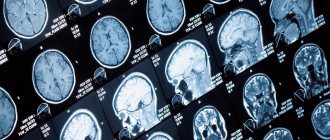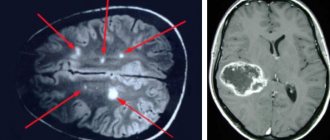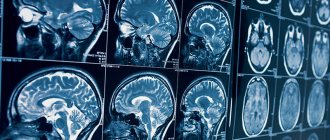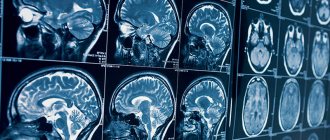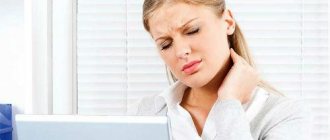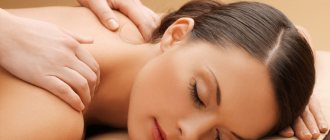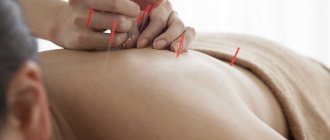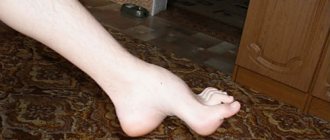How does the Charcot shower procedure work?
The effectiveness of the method lies in the effect on the body of jets of water, which are supplied under high pressure (from 2 to 4 atmospheres) and have a contrasting temperature (20-40 oC). The procedure is carried out in a special shower room as follows:
- The patient should stand at a distance of 3-5 m from the shower chair, behind which is the person conducting the session. If the shower is painful, you need to move away. To enhance the impact, you can stand closer.
- Water is directed onto the patient's body, first with a fan, then with a compact jet under pressure.
- Next, parts of the body (arms, back, sides, legs) are treated one by one with jets of hot, then cold water.
- The body must gradually get used to the load, so in the first sessions only one jet is used. In this case, the water temperature should be 36-40 oC. In subsequent sessions it is gradually reduced, bringing it to 20 °C by the end of the course. On the contrary, the jet pressure increases.
- If a Scottish shower is performed, during 1 procedure the water temperature is changed several times: first, the patient is exposed to hot (up to 42 °C) water for 30-40 seconds, and then switched to cold (15-20 °C) for 14-20 seconds .
- The shower is directed from head to toe, first to the front surface of the body, then to the side and back surfaces. At the same time, avoid getting water on the head, the area of the spinal column, the genitals, and mammary glands.
- Each limb is affected in turn (along the course of large vessels), after which the water is directed to the stomach (clockwise).
At the end of the procedure, the patient is given a fan contrast shower.
The duration of the first sessions of Charcot's shower is 1-2 minutes, then by the end of the course it is gradually increased to 5-7 minutes. It is recommended to carry out the procedure once every 2-3 days. You should not come to Charcot's shower sessions every day, since in this case the load on the body will be excessive. Depending on the indications and tolerability, the course of treatment may consist of several sessions - from 10 to 15. The cycle of procedures can be repeated after 6 months.
The procedure must be carried out by a competent specialist who can objectively assess the condition of the patient’s body and correctly change the jet pressure, adjust the water temperature, and, if necessary, provide medical assistance. Otherwise, the session may lead to negative consequences.
Do you need any preparation for the procedures?
A Charcot shower session does not require any special preparation. You need to take with you:
- swimsuit (or swimming trunks);
- shower cap;
- slates;
- towel.
After the procedure, no special skin care is needed. If muscle pain occurs, use painkillers and, if necessary, buy a product to speed up the resorption of bruises.
What's the science?
In general, water procedures are considered beneficial for the health of all body systems. As for contrast procedures specifically, it cannot be said that scientists are very interested in this issue. The lack of high-quality studies does not allow clear conclusions to be drawn as to whether contrast showers are beneficial, harmful, or act as a placebo.
In a 2021 Dutch experiment, healthy people aged 18 to 65 took a warm shower and finished with a douche of cold water. The control group bathed as usual. Over the course of three months, the number of absences due to illness among those hardening up decreased by 29%. The duration of the contrast procedure - 30, 60 or 90 seconds - did not affect the results of the experiment. However, the number of days on which participants felt sick did not differ significantly between groups. The researchers concluded that dousing with cold water after a warm shower can relieve the symptoms and progression of colds and flu.
In 2008, a review was made of studies that assessed the effectiveness of contrast water procedures for the recovery of athletes. Scientists more or less agree that the cooling phase leads to vasoconstriction, which reduces the production of pro-inflammatory elements. This should help relieve swelling and inflammation. Heat, in their opinion, improves muscle elasticity, stimulates local blood flow and relieves muscle spasms.
The authors of another paper suggest that gradually lowering the temperature while showering may improve mood and relieve symptoms of depression.
The benefits and harms of the procedure
A cycle of Charcot's shower sessions has a general strengthening, tonic effect on the body, and also has many other positive effects:
- Improves the functioning of blood vessels, the lymphatic system, and increases the number of capillaries. As a result of increased blood flow, internal organs are better supplied with oxygen and nutrients.
- Depending on the temperature of the water, the tone of the striated muscles and blood vessels increases or decreases.
- The procedure stimulates the functions of the pituitary gland and hypothalamus, in turn this helps to improve the functioning of the endocrine and nervous systems.
- The body begins a self-healing process. After several sessions, a person feels cheerful and energetic.
- The manifestations of symptoms of inflammation and pain are reduced.
- The immune system is activated.
- Metabolism accelerates, which promotes weight loss and improves the processes of excretion of cellular metabolic products. We can say that Charcot's shower has a powerful fat-burning effect.
A course of procedures makes the skin fresh, tightened, eliminating signs of cellulite.
During the session, the lymphatic system is activated. As a result, cellular nutrition improves and the processes of removing waste and toxins are stimulated. Regular procedures can help resolve benign tumors.
Is there any harm?
The impact of water jets is often painful and leaves bruises on the body. As a rule, they appear after the first procedures, then disappear after about 2 weeks. Not all patients with increased pain sensitivity can withstand the full course. In this case, it is better to use other hydrotherapy methods.
According to patient reviews, subsequent procedures are less painful than the first.
If you ignore information about contraindications, chronic diseases may worsen. It is very important that the sessions are carried out by a competent specialist, otherwise Charcot’s shower can be harmful to health.
It activates the nervous system
Shevchuk's research showed that when exposed to cold, the sympathetic nervous system is activated, and the levels of beta-endorphin and norepinephrine in the blood increase. Norepinephrine is an organic chemical that functions in the brain and body as a hormone that helps people feel happier, usually released in the brain.
Cold water can also increase the production of beta-endorphins, or "feel-good" molecules. In addition, due to the high concentration of con receptors, cold showers cause a huge number of electrical impulses to be sent from peripheral nerve endings to the brain, which gives an antidepressant effect.
A mechanism that could likely explain the immediate mood boost from immersion in cold water or after a cold shower is stimulation of dopaminergic transmission in the mesocorticolimbic and nigrostriatal pathways. Such dopaminergic pathways are known to be involved in emotion regulation. There is a lot of research linking these brain regions and depression.
Back to contents
Indications
Charcot's shower is prescribed for the following indications:
- disorders of the nervous system;
- vegetative-vascular dystonia;
- diseases of the digestive system;
- joint pathologies;
- osteochondrosis and other diseases of the spine;
- minor disturbances in the functioning of the cardiovascular system;
- chronic fatigue syndrome;
- constant stress;
- metabolic disorders;
- weakened immunity;
- diseases of an allergic nature;
- obesity;
- cellulite.
The procedures will also be useful during the rehabilitation period.
Contraindications
Charcot's shower procedures have contraindications:
- skin diseases;
- varicose veins;
- weak blood vessels;
- severe pathologies of the cardiovascular system;
- urolithiasis disease;
- malignant neoplasms;
- pregnancy;
- menstruation;
- increase in body temperature.
Sessions are prescribed with caution in the following cases (so-called conditional contraindications):
- protrusion;
- women's diseases (gynecology);
- hypertension;
- skin diseases;
- ulcers in the gastrointestinal tract;
- blood diseases.
If a caesarean section was performed, at least 6 months should pass after this. You can undergo the procedure if there are no postoperative complications. The seam should be free of inflammation. In any case, all patients should first consult a doctor. Then it is recommended to undergo 1 procedure; if everything is in order, you can continue the course.
Is it possible to carry out procedures at home?
Currently, plumbing stores sell many accessories for hydromassage at home. Using a special nozzle designed like a Charcot shower, you can conduct a session in your own bathroom. However, it is impossible to achieve the same effect, since the jet power will be less.
And the area of the bathroom will not allow you to maintain the required distance between the body and the taps. The water pressure will also not meet the standards. However, such a procedure at home will still be useful. It will have an excellent tonic effect, especially in the morning, and will give a boost of energy.
You can purchase a nozzle that provides water pressure up to 4 atmospheres. This indicator will be enough to perform a body massage. The hydromassage nozzle is fixed in place of a regular shower.
An alternative option is a contrast shower.
Which is better: Charcot shower or underwater hydromassage
An equally effective water procedure is underwater hydromassage. The patient is placed in a special bathroom 2 m long and 1 m wide, which is equipped with a pump and a flexible hose with a nozzle. The water temperature is 30-37 oC.
You can add sea salt, a decoction of medicinal herbs, and aroma oil to the bath.
The patient should first simply lie in the water for 5-7 minutes. Then the specialist begins the massage using a flexible hose through which water comes out under a pressure of 1-4 atmospheres. The massage therapist uses a jet of water to target all problem areas of the patient.
Underwater hydromassage is effective for excess weight, cellulite, and swelling.
The duration of the procedure is 15-35 minutes, the frequency is every day or every other day. The recommended course is 10-20 baths, after six months it can be repeated.
Compared to Charcot's shower, underwater hydromassage has a more gentle effect on the body and has fewer contraindications. These include:
- urolithiasis disease;
- vein diseases;
- severe hypertension;
- exacerbation of cardiovascular diseases;
- cerebrovascular accidents;
- pustular skin diseases;
- malignant neoplasms;
- pregnancy.
The patient does not experience any painful sensations during the sessions, but the cost of the course will be higher. Charcot's shower is more affordable and more effective from a cosmetological point of view, although it gives the patient discomfort during the session. For maximum results, you can combine both methods.
Sympathetic adrenal crisis
Sympathetic adrenal crisis is typical for older children. There is a feeling of anxiety, fear; chills, headache, cardialgia, cold extremities, dry mouth, feeling of shortness of breath, numbness of lips and tongue, ringing in the ears, blurred vision, moderate fever and hypertension.
Emergency care for sympathoadrenal crisis
- Calm the child and put him to bed.
- Ingestion of tincture of valerian or hawthorn - 1 drop/year of life orally.
- Inject intramuscularly 0.5% diazepam solution 0.1 ml/year, but not more than 2 ml.
- For headache and fever, administer intramuscularly a 50% solution of metamizole sodium (analgin) 0.1 ml/year and a 2.5% solution of promethazine (pipolfen) 0.01 ml/kg.
